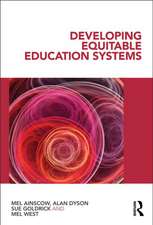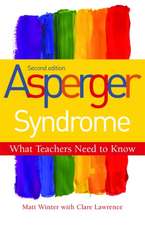Community Schools in Africa: Reaching the Unreached
Kristin Helmore Editat de Deborah Glassman Contribuţii de Chloe O'Gara Editat de Jordan Naidoo, Fred Wooden Limba Engleză Paperback – 4 noi 2010
The literature on community schools in Africa tends to be sparse, repetitive and highly descriptive with little or no sustained critique of practice. This book fills a substantial gap in the education literature and is particularly timely, given the current emphasis on decentralization and community involvement in education.
| Toate formatele și edițiile | Preț | Express |
|---|---|---|
| Paperback (1) | 384.31 lei 6-8 săpt. | |
| Springer Us – 4 noi 2010 | 384.31 lei 6-8 săpt. | |
| Hardback (1) | 391.79 lei 6-8 săpt. | |
| Springer Us – 11 mai 2007 | 391.79 lei 6-8 săpt. |
Preț: 384.31 lei
Nou
Puncte Express: 576
Preț estimativ în valută:
73.54€ • 76.78$ • 60.86£
73.54€ • 76.78$ • 60.86£
Carte tipărită la comandă
Livrare economică 04-18 aprilie
Preluare comenzi: 021 569.72.76
Specificații
ISBN-13: 9781441942746
ISBN-10: 1441942742
Pagini: 228
Ilustrații: XXV, 230 p.
Dimensiuni: 155 x 235 x 12 mm
Greutate: 0.33 kg
Ediția:Softcover reprint of hardcover 1st ed. 2007
Editura: Springer Us
Colecția Springer
Locul publicării:New York, NY, United States
ISBN-10: 1441942742
Pagini: 228
Ilustrații: XXV, 230 p.
Dimensiuni: 155 x 235 x 12 mm
Greutate: 0.33 kg
Ediția:Softcover reprint of hardcover 1st ed. 2007
Editura: Springer Us
Colecția Springer
Locul publicării:New York, NY, United States
Public țintă
ResearchCuprins
Community Schools: The Solution to Local Needs.- Mali, 1992–2003: The First Experiment.- Malawi, 1994–2003: Training on a National Scale.- Ethiopia, 1992–2001: Helping Communities Fill the Education Gap.- Uganda, 1999–2005: Transferring to Government Control.- USAID and Community Schools in Africa: The Vision, the Strategy, the Commitment.- Supply-Side Education: Africa's Home-grown Schools.- What's Next for Community Schools?.
Textul de pe ultima copertă
Over the past decade, community schools similar to those supported by Save the Children have been established in many developing countries, and especially in sub-Saharan Africa. As large numbers of children attend schools started and managed by their own communities and/or by nongovernmental organizations, questions have come up about the impact of such schools at large scale: "Can village-based or community schools have a national impact on access to education, spur improved long-term development strategies and education policy, or achieve or influence Education for All? This book explores these and related questions, drawing on Save the Children’s experience with community-based schooling in four countries: Ethiopia, Malawi, Mali, and Uganda.
The literature on community schools in Africa tends to be sparse, repetitive and highly descriptive with little or no sustained critique of practice. This book fills a substantial gap in the education literature and is particularly timely, given the current emphasis on decentralization and community involvement in education.
Save the Children has been a pioneer in the community school movement, particularly in Africa. Community schools are created in areas where access to education is limited or non-existent. The community school approach has been recognized for its easy replicability, cost-effectiveness and dramatic improvements in basic education for children in need.
The literature on community schools in Africa tends to be sparse, repetitive and highly descriptive with little or no sustained critique of practice. This book fills a substantial gap in the education literature and is particularly timely, given the current emphasis on decentralization and community involvement in education.
Save the Children has been a pioneer in the community school movement, particularly in Africa. Community schools are created in areas where access to education is limited or non-existent. The community school approach has been recognized for its easy replicability, cost-effectiveness and dramatic improvements in basic education for children in need.
Caracteristici
Raises theoretical issues but remains grounded in four diverse African contexts Addresses the serious doubts about realilzing the Education for All and Millennium Development Goals Attends to grassroots efforts and demonstrates the broader trend toward democratization Traces developments over a decade and points to changing perceptions of community in the development arena Includes supplementary material: sn.pub/extras


















